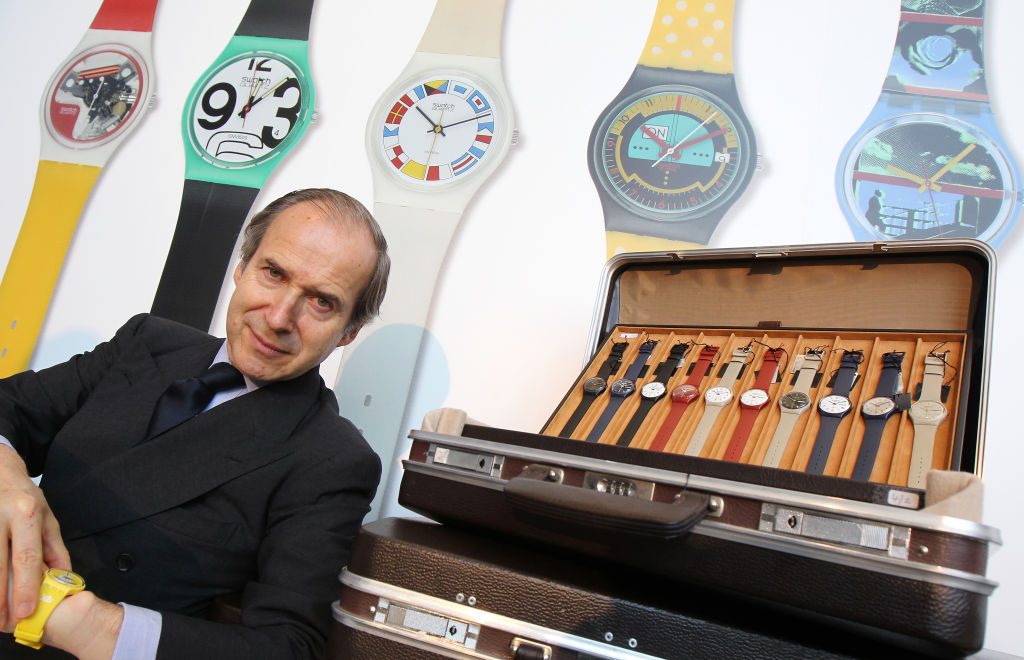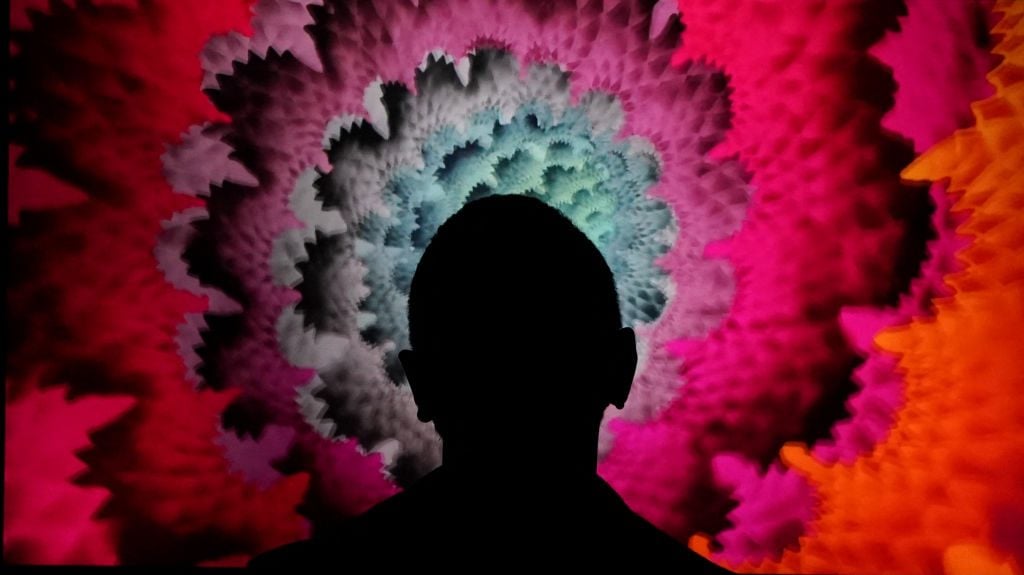Art World
Simon de Pury Found NFTs Very, Very Confusing. So He Gave Himself a Crash Course—and Realized They’re Here to Stay
The art-industry veteran weighs in on the gold rush for NFTs, and what it has in common with the Swatch boom of the '80s.

The art-industry veteran weighs in on the gold rush for NFTs, and what it has in common with the Swatch boom of the '80s.

Simon de Pury

Every month in The Hammer, art-industry veteran Simon de Pury lifts the curtain on his life as the ultimate art-world insider, his brushes with celebrity, and his invaluable insight into the inner workings of the art market.
On March 11, Christie’s sold an NFT by an artist named Beeple for $69 million.
The news spread like wildfire, and I was inundated with calls from friends, clients, and artists all wanting to get in on the action. It caused an instant frenzy and launched a kind of gold rush that I had not experienced since the height of the Swatch fever in the mid-1980s. Back then, the plastic watch invented by Nicolas Hayek saved the Swiss watch industry, and for a while became a currency of its own. Swatches were being snapped up by collectors all over the world and many teenagers were amassing small fortunes.
I must admit to my great shame that I was totally unprepared for the sudden onslaught of interest in NFTs. I didn’t really know what an NFT was, although I should have, considering I had been struck by an Instagram post by fellow Artnet News columnist Kenny Schachter in which he playfully proclaimed that he had changed his name to Nifty (a reference to the NFT platform Nifty Gateway).
This statement nearly had the same effect on me as when, back in 1993, my ultimate hero Prince changed his name to a symbol and was thereafter referred to as the artist formerly known as Prince. I thought that I should read Kenny’s articles on NFTs, but being a procrastinator for things that don’t instantly grab me, I didn’t do it.
I had also never heard of Beeple. I loved the sound of his name as it was so close to Beatle(s), my other musical Gods. With all the calls coming in, there was no way I could continue being so ignorant. I even overheard my 10-year-old daughter telling her mother over the phone that she wanted to buy new animals for the Roblox game, and being given the advice, “You’ve got to go and sell your own NFTs, that way you can buy as many Roblox figures as you want!”
I clearly had to catch up ASAP.
The first thing I did was read two of Schachter’s excellent articles on the topic. The good news is that all readers of Artnet News will have read his articles and I therefore don’t need to explain here what an NFT is.
I also caught up on Beeple and now follow his Instagram feed, and I went on the various websites specializing in NFTs such as the digital art marketplaces SuperRare, Known Origin, and Rarible to familiarize myself with some of the other NFT artists.
Do I love their work? Am I visually excited or stimulated? The answer is no. Some of it reminded me of the graphic inventiveness that some album covers had in the 1960s or ‘70s, but was not enough for me to think I absolutely needed to own any of them.
I am, however, fascinated by the rebellious side of it all, by this whole new world that was created entirely without traditional gatekeepers or established players. There is something refreshing and invigorating about this fact, not unlike the exciting rebellious feeling that existed at the beginning of rock n’ roll, punk, or hip hop.
My immediate question was, how were artists from the physical art world going to respond to this new fever? When I was on the phone with Marc Glimcher from Pace about an unrelated matter, I asked him how David Hockney, who has always been quick to embrace new technologies in his work, was reacting to it all. By the time of writing these lines I did not have the chance to check in with Marc, but Hockney has since lashed out at NFTs, calling them ICS’s, for International Crooks & Swindlers, in a podcast interview with the Sunday Times art critic Waldemar Januszczak. So much for that.
Other traditional artists and dealers were faster to jump on the NFT bandwagon. Almine Rech collaborated with the painter César Piette on four NFT editions ranging in price from $250 to $799. They all sold out. Piette is an artist who paints very slowly and whose production is therefore quite limited. The NFT of his work allowed the artist to reach a completely different audience and to give access to collectors who could never get one of his paintings to compete for an NFT. Loïc Gouzer was nearly as quick, and on April 11 he sold the first NFT by Urs Fischer for $98,000.

A person looks at a piece by Hoxxoh at Superchief Gallery NFT, a physical gallery showing NFT (non-fungible tokens) artwork in New York. Photo by Timothy A. Clary/AFP via Getty Images.
The NFT craze suddenly makes high prices for physical art seem inexpensive in comparison. Provided that it will soon be possible to mint NFTs without serious harm to the environment, not having to worry about the state of conservation of an artwork is a relief. No storage or insurance costs is a boon.
There are other practical advantages to the trend. The art market as a whole will hugely benefit from blockchain. In the same way that the market for photography changed once photographers started to do very small editions, the unicity of an NFT is reassuring. Provenance is one of the key factors influencing the value of an artwork. Having a seamless provenance is good whether it is for a physical or a digital work.
No longer having to worry about where you kept the certificate of an artist, and every transaction being recorded, will be immensely helpful for building trust in the market. Digital art, blockchain, and NFTs are here to stay for sure.
It begs the question of whether the need to possess physical things will stay with us. After all, my once huge collection of vinyls was followed up by an equally huge collection of CDs. Today I am perfectly happy to listen to music all day on Spotify. I have not read a physical newspaper or magazine for months. Habits do change. Ownership always was something abstract anyway. Looking at a fabulous work of art in a collector’s home is nearly as gratifying as owning it yourself.
Acutely suffering myself from the collecting disease for many years, whether for objects high or low in value, I am bizarrely not tempted to acquire NFTs for my own collection. I love, live, and breathe art, but my attraction to it is purely physical. In the digital world, porn is by far the biggest business. However no technological innovations will ever even get close to having real sex.
I believe that my own love for art will always be guided by the desire to see the real thing up close, to enjoy its tactile qualities or to admire a painter’s brushwork. So as Dua Lipa would sing, “Let’s get physical!”
Simon de Pury is the former chairman and chief auctioneer of Phillips de Pury & Company and is a private dealer, art advisor, photographer, and DJ. Instagram: @simondepury